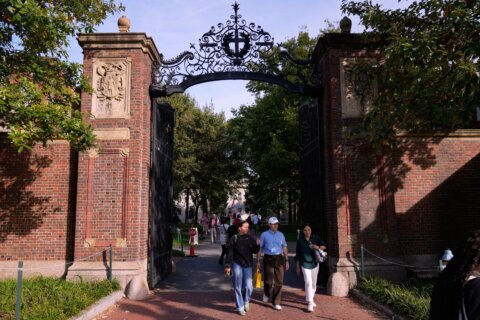Universities in many regions of the world are vying to enroll students from overseas.
Countries including Canada, Germany and South Korea have set goals to attract tens of thousands more international students to their college campuses over the next several years. These nations are searching globally for top talent in part to bolster their workforces, especially as populations in places such as Germany begin to age.
More than 4 million students left their home countries to study abroad in 2012, according to the latest data available from the Organization for Economic Cooperation and Development. To help prospective international students compare institutions around the world, U.S. News has launched a second, expanded edition of the Best Global Universities rankings, which evaluate schools based on academic research performance and reputation.
The overall 2016 Best Global Universities rankings encompass the top 750 universities located around the globe, an increase from the 500 that were included in last year’s inaugural rankings. But the school on top remains the same: Harvard University, located in Massachusetts in the northeastern U.S.
[See photos of the top 20 Best Global Universities.]
Counting Harvard, eight of the top 10 Best Global Universities are found in the U.S. Of those eight U.S. schools, two are public institutions: the No. 3-ranked University of California–Berkeley and the No. 8-ranked University of California–Los Angeles. The top 10 is rounded out by two schools in the United Kingdom: the University of Oxford, ranked No. 5, and the University of Cambridge, ranked No. 6.
While there was little movement in the top 10 between this year and last, one U.S. school ranked among the top 20 jumped a notable five places. The University of Pennsylvania moved up from the No. 19 spot to a tie with Yale University in the U.S. for No. 14. Meanwhile, Imperial College London in the U.K. fell from No. 12 to No. 18.
Overall, 57 countries have institutions featured in the rankings, up from 49 nations last year. With 181 institutions represented, the U.S. has by far the most universities in the top 750. China has the next-highest number of schools, with 57, followed closely by the United Kingdom, with 55 universities making the cut.
[Get answers to frequently asked questions about the global rankings.]
The Best Global Universities rankings, which incorporate data from Thomson Reuters InCites TM research analytics solutions, do not focus on a university’s separate undergraduate or graduate programs. Instead, the rankings illustrate an institution’s overall strength in terms of research activity and reputation, differentiating them from the U.S. News Best Colleges and Best Graduate Schools rankings of U.S. programs.
In addition to factors such as global research reputation and international collaboration, the U.S. News methodology expanded this year to include two separate ranking indicators for research published in books and communicated at academic conferences.
Beyond the overall rankings, students can explore how universities stack up against others in the same region or within the same country, as well as in various academic subjects.
New to the 2016 rankings is a regional ranking of universities in Africa. The regional rankings are based entirely on how schools fared in the overall rankings of the top 750 universities worldwide; other regional rankings cover Asia, Australia/New Zealand, Europe and Latin America.
The No. 1 university in Africa is the University of Cape Town in South Africa. Of the top universities in this region, six are in South Africa, three are in Egypt and one is in Uganda.
The schools that top the other 2016 regional rankings are the reigning No. 1s from 2015: Japan’s University of Tokyo in Asia; Australia’s University of Melbourne in Australia/New Zealand; the U.K.’s Oxford in Europe; and Brazil’s Universidade de São Paulo in Latin America.
This year, there are 32 country-specific rankings available, nearly triple the total published last year. Country rankings are based on how schools ranked among the overall Best Global Universities.
Among the newcomers to the country rankings are Brazil, India and Austria. There are also rankings for several of the countries that, according to the Institute of International Education, are among the most popular destinations for international students, including the United Kingdom, China, France, Germany, Australia and Canada.
[Explore nine reasons to earn a bachelor’s degree overseas.]
The Best Global Universities rankings also include the top-performing institutions in 22 key subject areas, including engineering; economics and business; and computer science. Subject rankings are based on a separate methodology, which incorporates several factors that measure academic research and reputation in each of these specific fields. However, the rankings are not of academic majors, departments or schools, such as business or medical schools.
One addition this year is the arts and humanities subject ranking, which includes fields such as history and philosophy. Oxford in the U.K. is the top-ranked institution in arts and humanities, and Cambridge sits in the No. 2 spot.
Some universities were ranked in all or nearly all of the subject rankings, demonstrating research strength across a broad range of academic fields. Along with a number of institutions in the U.S. and the U.K., several Canadian schools performed well in this respect: The University of British Columbia was ranked in all 22 subjects, while McGill University and the University of Toronto were ranked in 21.
See the complete rankings of the Best Global Universities.
More from U.S. News
Reasons to Earn a Bachelor’s Degree Overseas
4 Types of Students Who Should Consider International Universities
Learn How the Best Global Universities Rankings Were Calculated
Harvard Tops 2016 U.S. News Best Global Universities Rankings originally appeared on usnews.com







